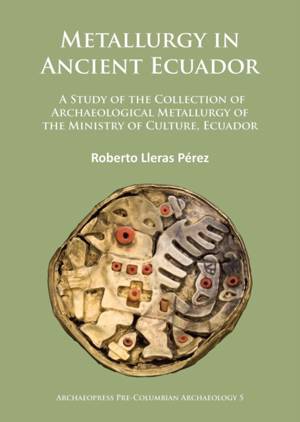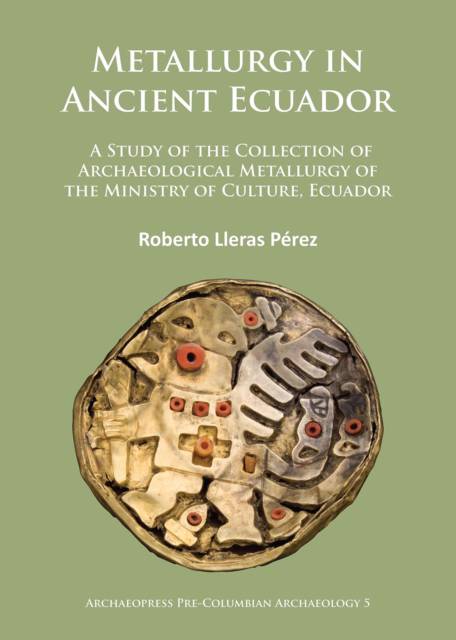
Door een staking bij bpost kan je online bestelling op dit moment iets langer onderweg zijn dan voorzien. Dringend iets nodig? Onze winkels ontvangen jou met open armen!
- Afhalen na 1 uur in een winkel met voorraad
- Gratis thuislevering in België vanaf € 30
- Ruim aanbod met 7 miljoen producten
Door een staking bij bpost kan je online bestelling op dit moment iets langer onderweg zijn dan voorzien. Dringend iets nodig? Onze winkels ontvangen jou met open armen!
- Afhalen na 1 uur in een winkel met voorraad
- Gratis thuislevering in België vanaf € 30
- Ruim aanbod met 7 miljoen producten
Zoeken
Metallurgy in Ancient Ecuador
A Study of the Collection of Archaeological Metallurgy of the Ministry of Culture, Ecuador
Roberto Lleras Perez
€ 37,95
+ 75 punten
Omschrijving
Metallurgical activity was present in Ecuador from at least 1500 BC; by around the beginning of the Common Era metallurgical manufacture and use had extended to most of the Costa and Sierra. Regional styles soon evolved giving rise to high levels of technical craftsmanship and to shaping particular iconographic and decorative patterns. Copper, gold, silver and platinum were mined, processed and converted into thousands of ornaments, offerings, tools and weapons extensively used both by elites and by the common people. By 1450, the Incas had invaded most of the Ecuadorian Sierra and eventually they integrated the diverse metallurgical traditions into their state-managed metallurgical industry. The European conquest in the sixteenth century deeply affected the native metallurgical activities, even though in some regions copper continued to be worked throughout the colonial period. The reconstruction of the general outlines of this fascinating historical process was made possible through the study of the collection of archaeological metal objects of the Ministry of Culture and Heritage of Ecuador, the compilation of previous archaeological references, laboratory analyses and C14 dating of museum objects. This work is the first one of its kind to be published on the ancient metallurgy of Ecuador.
Specificaties
Betrokkenen
- Auteur(s):
- Uitgeverij:
Inhoud
- Aantal bladzijden:
- 150
- Taal:
- Engels
- Reeks:
Eigenschappen
- Productcode (EAN):
- 9781784911607
- Verschijningsdatum:
- 31/07/2015
- Uitvoering:
- Paperback
- Formaat:
- Trade paperback (VS)
- Afmetingen:
- 175 mm x 249 mm
- Gewicht:
- 544 g

Alleen bij Standaard Boekhandel
+ 75 punten op je klantenkaart van Standaard Boekhandel
Beoordelingen
We publiceren alleen reviews die voldoen aan de voorwaarden voor reviews. Bekijk onze voorwaarden voor reviews.











